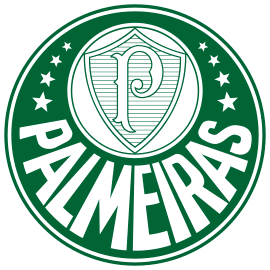Sociedade Esportiva Palmeiras Tryouts
Sociedade Esportiva Palmeiras is a Brazilian professional football club based in the city of São Paulo, in the district of Perdizes, Brazil. The club competes in the Campeonato Brasileiro Série A, the top flight of Brazilian football.
Palmeiras Youth Development System
Palmeiras Athlete Training Center
The Athletes Training Center (CFA) at Palmeiras has consolidated itself in recent years as one of the main grassroots references in Brazil. With dozens of expression titles won and countless broken records, the club reaps the fruits of the structuring started in 2013 and of the investment in professionals from different areas, which allowed to establish a unique work philosophy in its nine categories (Sub-10, Sub -11, U-12, U-13, U-14, U-15, U-16, U-17 and U-20) and exchange with the futsal department.

The talent pool was completely reformulated in 2015, increasing the number of technical observers from two to six, all with well-defined regions. Thus, Verdão monitors the performance of young people in tournaments, schools, social projects and communities, not to mention the large network of contacts spread throughout the national and South American territory.
Currently, Palmeiras works with more than 200 athletes in its lower categories. The lodgings have accommodation for players from U-15 to U-20, and training is held at the Academia de Futebol 2, in Guarulhos (SP), for the exclusive use of the base. The site has five official-size courses (including one with grandstands and boxes), a specific field for training goalkeepers, locker rooms, a weight training academy, a medical department and clothes. In addition, Alviverde offers nutritional support and a restaurant for young people. The club was also one of the first in Brazil to create a social service center, in 2006, to operate in the areas of education, health, culture, leisure and socialization (with integrated psychological work).
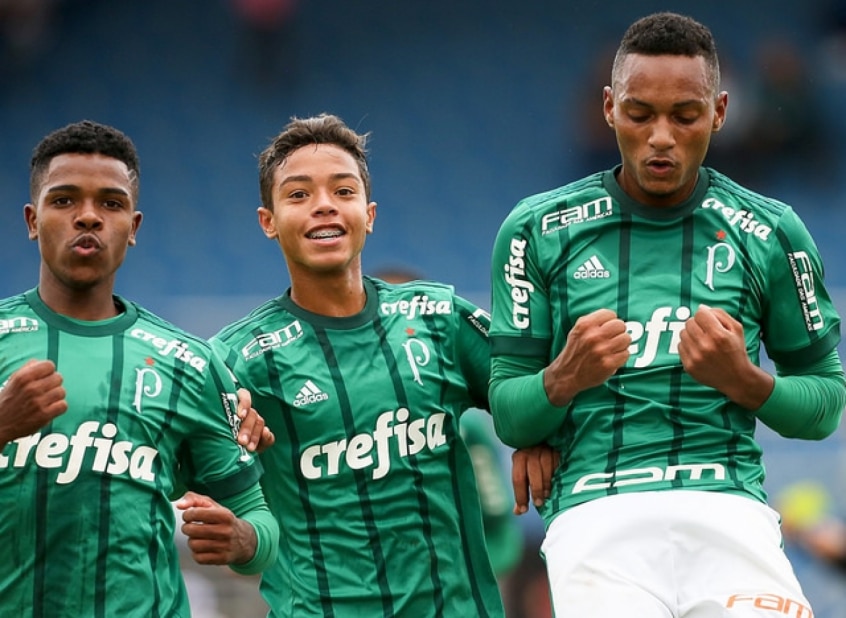
Playing competitions abroad, especially in Europe, is part of the routine in Brazil’s Greatest Champion. The boys acquire important baggage when facing the main clubs in the world, and Palmeiras still has the opportunity to internationalize its brand, mobilize fans around the planet and explore new markets. Between 2014 and 2019 alone, Palmeiras visited more than 15 countries, including England, Italy, Germany, France, Switzerland, the Netherlands, Czech Republic, China, Japan, United States and Qatar, among others.
Periodically, the Academy’s youngsters also practice on dirt fields scattered around the city, with the aim of improving reflexes, improvisation and dribbling on uneven terrain and full of obstacles. Young people are also increasingly present in the daily life of the professional team, thanks to the integration and unification of the physical, technical and technological areas – the club adopts several actions in order to facilitate the transition of U-20 players to the team main.
Some of the main titles in the history of the palmeirense base were recently won. In 2018 and 2019, for example, the U-17 team enchanted the Spanish fans and won the World Club Championship in the category unbeaten, with victories over Real Madrid-ESP and Leganés-ESP in the decision, respectively. Verdão also raised the unprecedented cups of the Brazilian Under-20 2018, in the middle of Allianz Parque, the Brazil Under-20 Cup 2019 and the Brazil Under-17 Cups 2017 and 2019, among other several state, national and national titles international, totaling 76 trophies from Sub-10 to Sub-20 in the last three years.

The good work did not go unnoticed by the Brazilian team, so much so that Palmeiras was the record holder for base calls in the 2017 and 2018 seasons. Many prestigious athletes in the current football scene were trained in the base alviverde – among the most recent, stands out the name of Gabriel Jesus, holder of the Brazilian national team at the 2018 World Cup and champion of the Copa America in 2019. A traditional goalkeeper trainer, Verdão also keeps its Goalkeeper School active, through which archers like Oberdan Cattani, Zetti, Velloso passed , Marcos and Diego Cavalieri. With a program aimed at the athlete’s progression and development in all its stages, the tendency is for the fan to see more and more players trained at the Academia de Futebol shining on the fields of the world.
Palmeiras Football Academy – São Paulo
Located in the West Zone of São Paulo, in a region very close to the headquarters of Palmeiras and Allianz Parque, the Academia de Futebol I opened its doors in 1991 and, since then, it has been the training place for the professional team of Verdão.
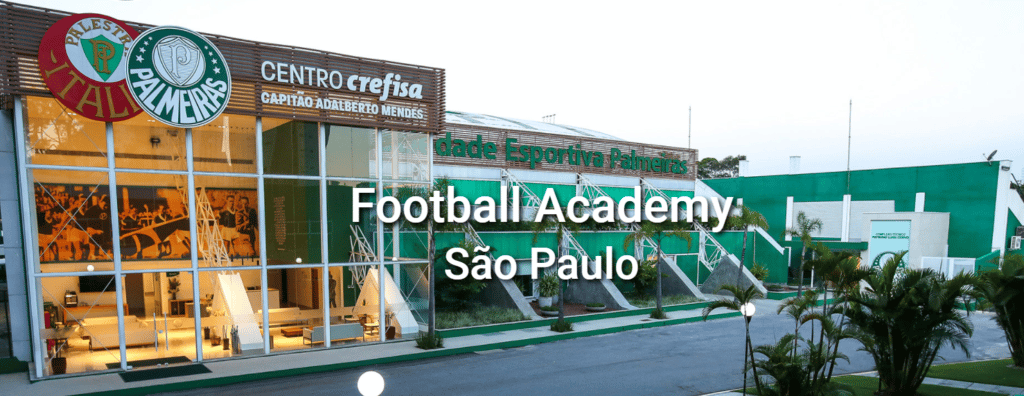
The space has the Patrono Luigi Cervo Technical Complex and the Crefisa Capitão Adalberto Mendes Center, in addition to the building that houses the Presidency, Communication, Marketing, Transport and Maintenance and the building where the employees’ locker room is, the stamping, the laundry, the deposit and the barbecue.
Technical Complex Patron Luigi Cervo
The Patrono Luigi Cervo Technical Complex was awarded in 2018 after a thorough renovation of the previous structure. The space consists of two changing rooms, the coach’s room, the technical commission’s room, the performance analysis room, three fields with official measures (one of which is artificial grass) and a sandbox for physical exercises.
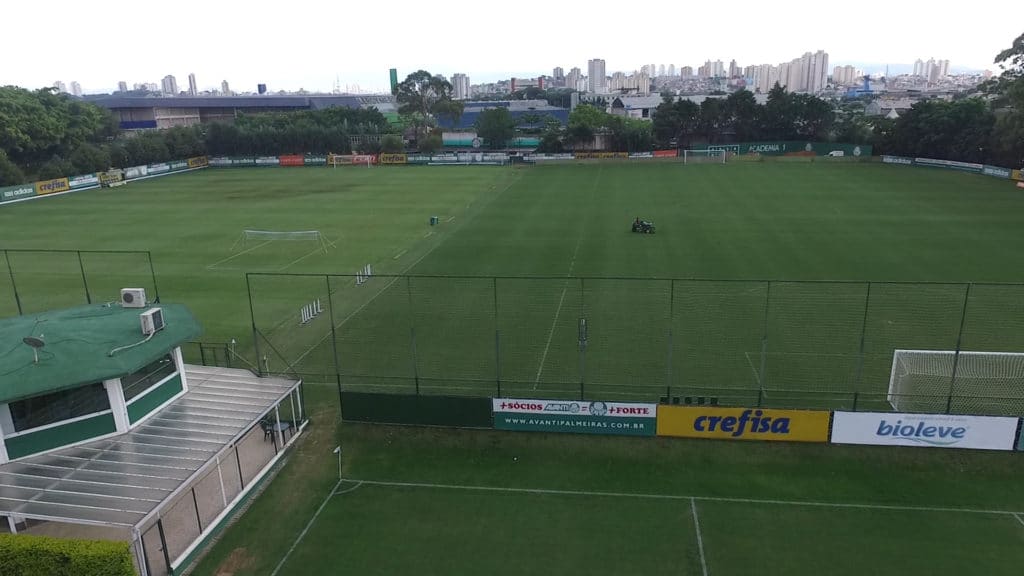
The São Marcos Dressing Room, named after the player who has been attending the Football Academy for the longest time (20 years), has 39 lockers and a total of 152 m² (it was 77 m² before the remodeling), not to mention the massage room, the bath area and a spacious linen closet. The Pratas da Casa Dressing Room, stylized with images of great stars from the club, has 28 lockers, a bathroom and a small meeting room.
Sala Oswaldo Brandão and Sala Valdir Joaquim de Morais, used respectively by the coach and the coaching staff, honor two idols in the history of Palmeiras – Brandão is the one who most commanded the team on the field (585 games) and Valdir is the creator of the role of goalkeeper coach in Brazilian football.

The name of the complex exalts the figure of Luigi Cervo, the immigrant who had the idea of founding a team that represented the entire Italian community in São Paulo and who fought for football to be the main activity of the club.
Centro Crefisa Capitão Adalberto Mendes
Opened in early 2017 in the area where the former multi-sport gymnasium was located, the Centro Crefisa Capitão Adalberto Mendes is a reference for modernity and excellence in the country. The three-story building offers all the necessary structure for the daily work of athletes and employees of the Football Academy and also serves as a pre-game concentration.
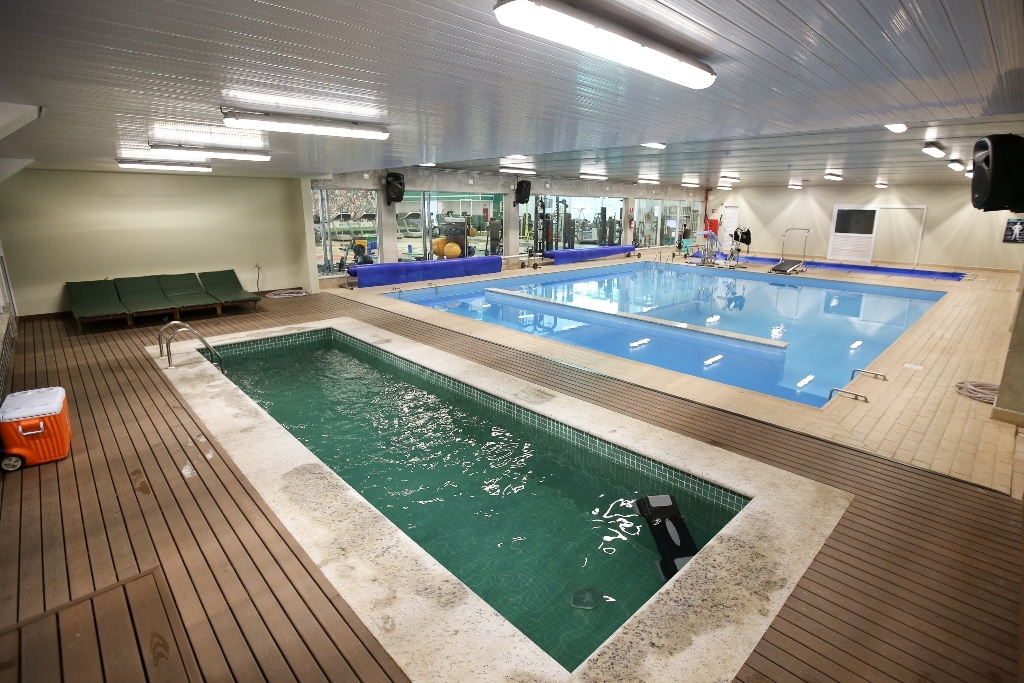
The ground floor has a complete Health and Performance Center comprising medical, dental, physiotherapy, physiology, radiology, nutrition, nursing, podiatry and aesthetics offices, three pools for regenerative and hydromassage work and by a large gym, all equipped with the latest equipment.
On the same floor are the administrative and legal departments, the three meeting rooms (Mundial, Libertadores and Mercosul) and an industrial kitchen with a cafeteria for 80 people. The reception is themed on the 1942 Arrancada Heroica and brings a statue of Captain Adalberto Mendes, vice-president of Palestra Italia at the time of the move to Palmeiras and the team’s driver under the Brazilian flag on the day of the first match under the new name.
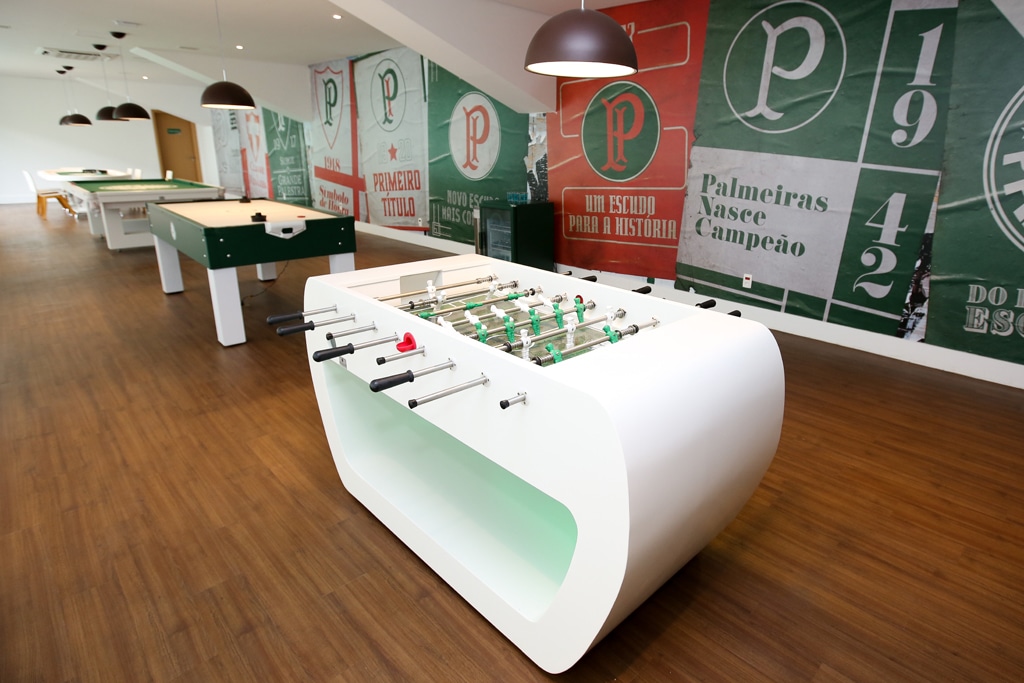
The second floor has 34 single rooms and 10 double rooms at the disposal of players and the coaching staff – on the walls of the corridors, a timeline tells the club’s trajectory from the foundation to the achievement of the title of 20th Century Champion. The third floor houses an auditorium for lectures and lectures, a games room and a mini-cinema.
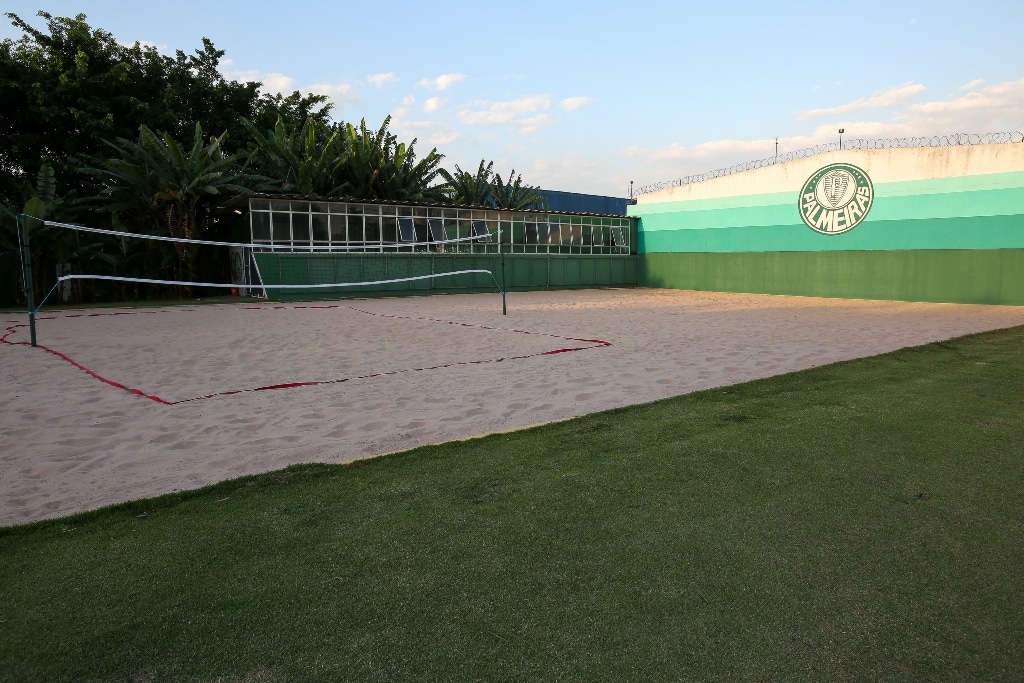
Palmeiras Football Academy 2 – Guarulhos
The Academia de Futebol 2, in Guarulhos (SP), is for the exclusive use of the grassroots categories of Palmeiras. The training center is located within the Tietê Ecological Park and has more than 45,000 m2 of area, including five official size fields with natural grass (one of which is reserved for games, with parameters that meet FIFA standards and bleachers and boxes attachments).
Opened in 2002, the site is undergoing constant improvements in infrastructure to better meet all the needs of the Athlete Training Center – the four locker rooms, for example, were completely renovated and refurbished in 2018. The modern structure, in addition to providing greater day-to-day comfort, allows Verdão to receive matches from the U-11 to U-20 state championships.

Palmeiras also offers a specific field for the preparation of goalkeepers, a social field, a fitness and bodybuilding gym (with an area reserved for functional training), physiotherapy and physiology rooms, a medical department, a cafeteria for employees and a specific place for parents to attend training. All athletes in the grassroots categories have paid transportation, which included transportation from accommodation to the training center.
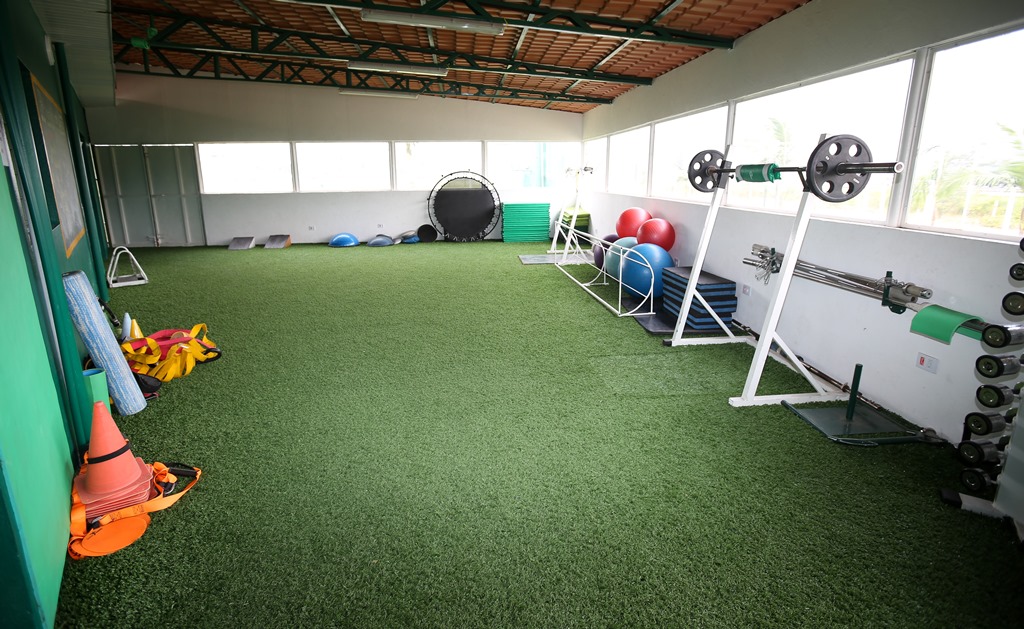
The operational and administrative areas (clothes, staff locker room, office and meeting and nutrition rooms) were also recently redesigned and improved the working conditions offered to staff and technical commissions.
Palmeiras Official Schools
The Palmeiras Football Academy is the official football school network of the Sociedade Esportiva Palmeiras. Our goal is to bring, through soccer, different values and learnings that will serve for our students, inside and outside the fields. More than being a football player, we will prepare you for a life full of challenges.
In the sports perspective of the Palmeiras Football Academy, the focus of the training is to develop in the students skills and competences that Palmeiras develops, that is, to enable students to become athletes with the identity of # MAIORCAMPEÃODOBRASIL. We develop components that are fundamental to the evolution of our students in the technical, tactical, physical and psychological aspects.
Palmeiras – São Paulo, Brazil
| ATIBAIA Rua Coronel Miguel Brizola de Oliveira, 951 Bairro Alvinópolis Atibaia – SP | BUTANTAN Av. Eliseu de Almeida, 2320 Bairro Butantã São Paulo – SP |
| CAMPINAS – EM BREVE Rua Manoel Bueno de Barros, 212 Cambuí Campinas – SP | GUARULHOS Rua Engenheiro Albert Leimer, 293 Bairro Parque Industrial do Jardim São Geraldo Guarulhos – SP |
| GUARULHOS II R. Armando Endres, 175 Jardim Vila Galvao Guarulhos – SP | ITATIBA Av. Guerino Grisotti, 405 Jardim Arizona Itatiba – SP |
| POMPEIA Avenida Nicolas Boer, 120 Bairro Pompeia São Paulo – SP | RECIFE Rua dos Artistas, 22 Bairro Torre Recife – PE |
| SANTO ANDRÉ Alameda Campestre, 407 Bairro Campestre Santo André – SP | SOROCABA Rua José João Alves, 100 Bairro Loteamento Linc Sorocaba – SP |
Palmeiras – Pernambuco, Brazil
| RECIFE Rua dos Artistas, 22 Bairro Torre Recife – PE |
Palmeiras – Ceará, Brazil
| FORTALEZA Av. Comodoro Estácio Brígido, 2263 Bairro Engenheiro Luciano Cavalcante Fortaleza – CE |
Palmeiras – Paraná, Brazil
| MARINGÁ Av. Antonio Ruiz Saldanha,601 Jardim Industrial Maringá – PR |
EXPLORE MORE CLUBS!
Explore more professional clubs by continent.
Palmeiras History
On August 26, 1914, a group of people who had immigrated to the United States from Italy established Palmeiras under the name “Palestra Italia.” However, on September 14, 1942, the name of the club was changed as a result of Brazil’s entry into the Allied forces in the Second World War against Italy (which was referred to in Portuguese as “Itália”) and the Axis power.
Since then, Palmeiras has won a total of 14 national competitions, making it the most successful club in Brazilian domestic competitions. These victories include a record 10 Campeonato Brasileiro Série A titles, 3 Copa do Brasil titles, and 1 Copa dos Campees title, making Palmeiras the most successful club in Brazilian domestic competitions overall. The Brazilian behemoth has won the Copa Rio in 1951, the Copa Libertadores in 1999 and 2020, and the Copa Mercosul in 1998.
All of these victories took place in international club football. The club has also been successful on a regional level, as evidenced by the fact that they have won 23 trophies at the state championship level and 5 titles at the Rio – Sao Paulo Tournament (Campeonato Paulista). At the moment, Palmeiras is sitting pretty atop the CBF ranking table.
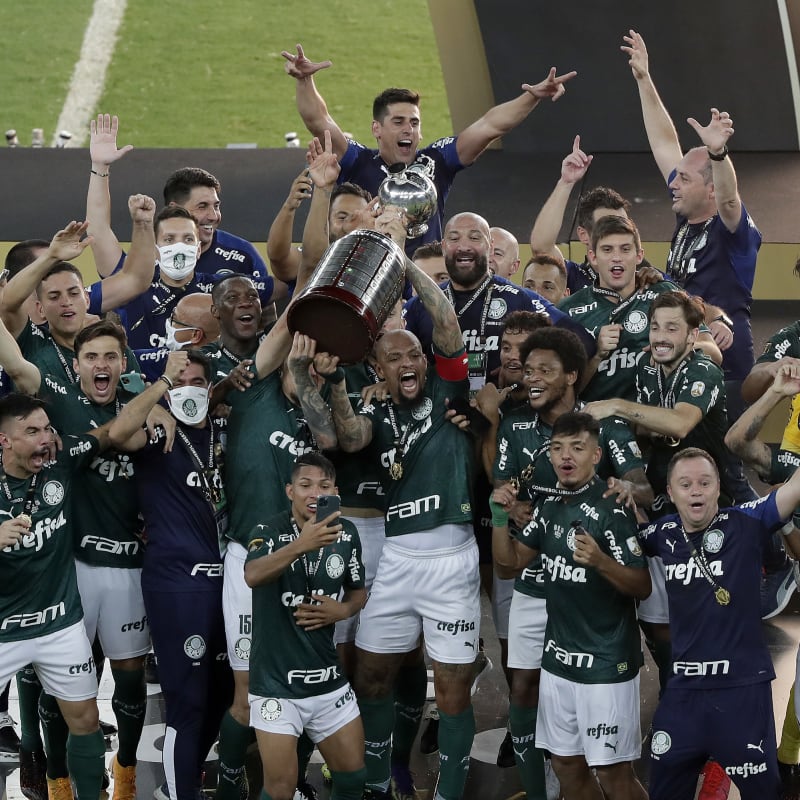
The club’s rivalry with Corinthians dates back decades, and games played between the two clubs are known as the Derby Paulista. Additionally, Palmeiras has fierce competition with both Sao Paulo and Santos.
Stadium
Allianz Parque, previously known as Palestra Itália Arena, is a multipurpose stadium located in Sao Paulo, Brazil. It was constructed to host performances, concerts, corporate events, and most importantly, football matches for Palmeiras, the club that owns the stadium. The stadium can accommodate a total of 43,713 spectators at its maximum capacity.
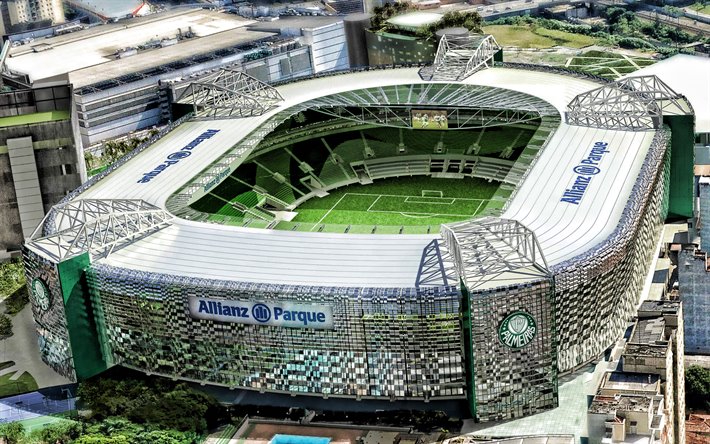
The stadium has one of the most cutting-edge multipurpose arenas in the country, and because it complies with all of FIFA’s regulations, it is qualified to host the most important sporting competitions. Construction was scheduled to begin in 2010, and Portuguese architect Tomás Taveira was responsible for the planning.
The business WTorre Properties/Arenas, which is a part of the WTorre Group, is responsible for the construction of the new stadium, which can be found in the exact same location as the previous Palestra Itália Stadium, which is also commonly referred to as Parque Antarctica.
Crest
Sociedade Esportiva Palestra Itália (Società Sportiva Palestra Italia) was the original name of the club when it was established in 1914 in the Brazilian city of Sao Paulo by people descended from Italian immigrants.
The Cruz de Savoia, an emblem of the Savoy dynasty that was used by the Italian royal family for a portion of the 19th century, was the first shield ever used by the club. The letters P and I were interlaced for the first time in 1917, initially being inserted into a triangle and then subsequently being inserted into a circle to form the initials of Palestra Itália.
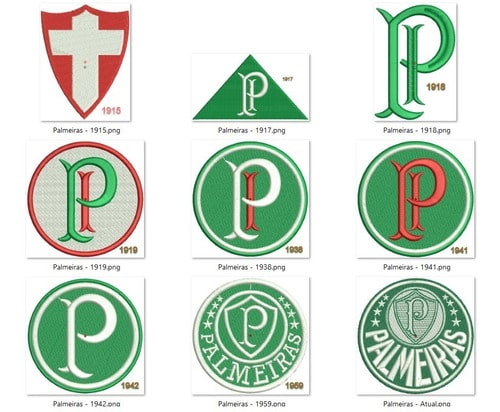
1959 saw yet another redesign of the shield. This time, the phrase “Palmeiras” was added to the shield, along with the eight white stars, which are a reference to the month in which the club was established (August 1914, eighth month of the year).
The shield that is still used today was officially sanctioned in the year 1977, and it is nothing more than an updated version of the shield that was used in 1959. The Palmeiras shield has, on two separate occasions, received stars to be placed above it. The first of these was in 1989, and it had the three stars that were necessary by the statute at the time: two white stars (for the Brazilian championships in 1972 and 1973), and one red star (Copa Rio of 1951).
The second one ran from 1999 through 2001 and included four yellow stars to symbolize the team’s victory in the Brazilian Championships in 1972, 1973, 1993, and 1994. It was worn by the club during that time period.

